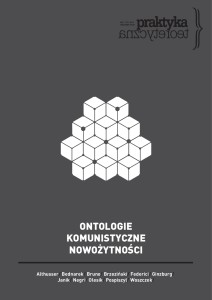Eliasz nauk. Apokaliptyka, paracelsjańska mistyka przyrody i narodziny nowoczesności (część pierwsza)
Elijah of the Arts: Apocalypticism, Paracelsian Mysticism of Nature, and the Origins of Modernity (part one)
Author(s): Marek WoszczekSubject(s): Early Modern Philosophy, Philosophy of Religion, Ontology
Published by: Uniwersytet Adama Mickiewicza
Keywords: early modernity; nature (cosmological) apocalypticism; myth of Elias Artista; mysticism of nature; Paracelsian alchemy; matter; pantheism; ontology of expression;
Summary/Abstract: The myth of [H]Elias Artista (or ‘Elijah of the Arts’) is one of the most interesting components of the rich 16th-century Paracelsian tradition from the margins of the post-Reformation orthodoxy. It signals a surprising development within the Christian apocalyptic tradition since ‘Helias artium chymicarum’, the messianic Experimentator as a human Christ-like figure and an end-of-time counterpart of the biblical blacksmith Tubal-cain, is an original transformation of the Jewish apocalyptic Elijah in a context of the early modernity on the eve of the Thirty Years War. That figure is an example from the broader domain of the Paracelsian ‘theoalchemy’ (Telle), which may be construed as a typically modern hybrid in the Latourian sense. Furthermore, in order to understand the peculiar post-Reformation phenomenon of the mysticism of nature (Dorn, Khunrath, Gutman, Arndt, Boehme, and others), which is in stark tension with orthodox theologies, it is necessary to take into account that it was a product of the new powerful intellectual formation which can be dubbed the nature (or cosmological) apocalypticism. It is claimed that that ‘vertical’ (non-eschatological) apocalypticism of nature is an early modern form of the ancient Jewish apocalyptic tradition transformed under the new social-cultural conditions into a formula of the ‘learning the secrets of nature’ in a complex process of renegotiating the power relations, and it produced the ample resource of the cognitive motivations for experimental activity, quite independently of the gradually waning millenarian affects. Thus, that transformation is important for understanding the religious early modernity and its immanentist, activist attitudes and getting beyond the one-dimensional discourses of the secularization paradigm, which obliterates or ignores the ‘vertical’ axis of apocalypticism and fixes itself upon the horizontal (millenarian) dimension while (re)constructing the criticized unpicturesque ‘irreligion of progress’ (Löwith). Early modernity could be better understood as a diffused turn (effect) associated with the innovative material (e.g. medical or chemical) practices and their new conceptualisations of matter and knowledge, where philosophy, theology, science of matter and social revolt seem inseparable. The myth of the Elijah of the Arts, contrary to a superficial secularization interpretation, is one of the symptoms of the growing process of ‘de-eschatologization’ through the alternative direction of apocalypticism, i.e., shifting an interest to nature and matter as the religious objects available to exploration, which produced the new power conflicts typical of modernity but also the ‘laboratory’ as a space of unveiling that which is hidden in nature.
Journal: Praktyka teoretyczna
- Issue Year: 2016
- Issue No: 19
- Page Range: 126-171
- Page Count: 46
- Language: Polish

